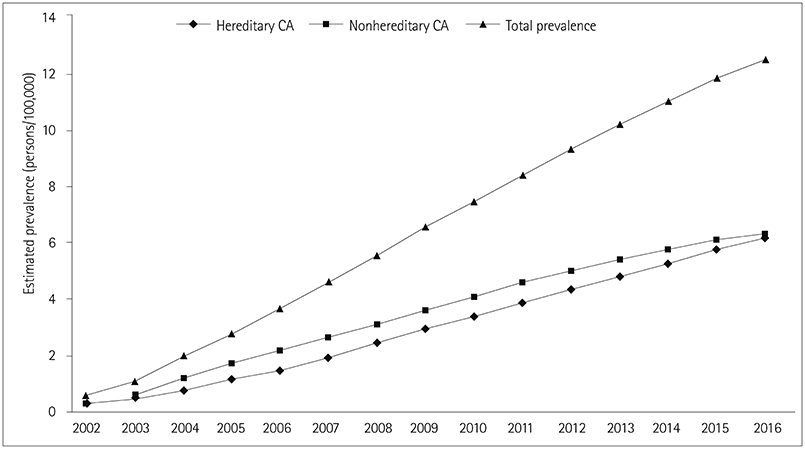J Clin Neurol.
2020 Jan;16(1):175-176. 10.3988/jcn.2020.16.1.175.
The Rise of Cerebellar Ataxia in South Korea: 2002–2016
- Affiliations
-
- 1Department of Neurology, Kosin University Hospital, Busan, Korea.
- 2Department of Neurology, Korea University College of Medicine, Seoul, Korea. kunu5347@gmail.com
- KMID: 2467806
- DOI: http://doi.org/10.3988/jcn.2020.16.1.175
Abstract
- No abstract available.
MeSH Terms
Figure
Reference
-
1. Stephen CD, Brizzi KT, Bouffard MA, Gomery P, Sullivan SL, Mello J, et al. The comprehensive management of cerebellar ataxia in adults. Curr Treat Options Neurol. 2019; 21:9.
Article2. Joo BE, Lee CN, Park KW. Prevalence rate and functional status of cerebellar ataxia in Korea. Cerebellum. 2012; 11:733–738.
Article3. Tsuji S, Onodera O, Goto J, Nishizawa M. Study Group on Ataxic Diseases. Sporadic ataxias in Japan--a population-based epidemiological study. Cerebellum. 2008; 7:189–197.
Article4. Shibata-Hamaguchi A, Ishida C, Iwasa K, Yamada M. Prevalence of spinocerebellar degenerations in the Hokuriku district in Japan. Neuroepidemiology. 2009; 32:176–183.
Article5. Muzaimi MB, Thomas J, Palmer-Smith S, Rosser L, Harper PS, Wiles CM, et al. Population based study of late onset cerebellar ataxia in south east Wales. J Neurol Neurosurg Psychiatry. 2004; 75:1129–1134.
Article6. Lee WY, Jin DK, Oh MR, Lee JE, Song SM, Lee EA, et al. Frequency analysis and clinical characterization of spinocerebellar ataxia types 1, 2, 3, 6, and 7 in Korean patients. Arch Neurol. 2003; 60:858–863.
Article7. Kim HJ, Jeon BS, Lee WY, Chung SJ, Yong SW, Kang JH, et al. SCA in Korea and its regional distribution: a multicenter analysis. Parkinsonism Relat Disord. 2011; 17:72–75.
Article8. Choi KD, Kim JS, Kim HJ, Jung I, Jeong SH, Lee SH, et al. Genetic variants associated with episodic ataxia in Korea. Sci Rep. 2017; 7:13855.
Article9. Jeong SW, Kim KJ, Jeong HS, Kim SK, Kim JT, Kim JS, et al. Present and future of neurologist: do we have enough neurologists?-in the aspect of stroke care. J Korean Neurol Assoc. 2018; 36:159–164.
Article10. Kim JS, Kwon S, Ki CS, Youn J, Cho JW. The etiologies of chronic progressive cerebellar ataxia in a Korean population. J Clin Neurol. 2018; 14:374–380.
Article
- Full Text Links
- Actions
-
Cited
- CITED
-
- Close
- Share
- Similar articles
-
- Spinocerebellar Ataxia Type 8 Presenting as Ataxia without Definite Cerebellar Atrophy
- A Case of Progressive Ataxia and Palatal Tremor
- Cerebellar type Ataxia in Middle Cerebral Artery Territory Infarction
- A Case of Early Onset Cerebellar Ataxia with Retained Tendon Reflexes
- A Case of Spinocerebellar Ataxia Type 7 with Torticollis


